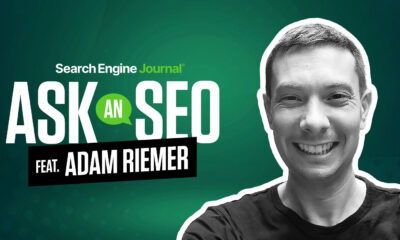MARKETING
How to Build a Successful Remote Freelance Team for Your Business

More and more businesses are hiring freelance talent and consultants instead of hiring full-time employees. It’s not just that many millennials are unwilling to work a traditional 9-to-5 office job. It’s also that freelancing offers many advantages. Freelancers are more affordable for the businesses hiring them, and they also tend to be more productive.
If you run a company that hires and manages a large number of freelancers, and you are just trying to keep things running smoothly nowadays when everything is online, it’s obvious how important it is to be well-organized in order to better categorize and track large amounts of data and information you receive on a daily basis. As a result, putting in place a creative resource management system might be an ideal solution for you.
These systems ensure that your freelancer database is always current, while custom filters enable you to easily categorize your contractors and quickly locate the ideal creative resources. All of this will fundamentally alter the way you interact with your freelance workforce, making them realize that they are a valuable member of your team.
Determine Which Duties You Will Delegate
Even though many organizations think that freelancing services are only for design or software development, there are plenty of opportunities for other roles you can delegate to contractors. You may find that online businesses can take less time in between tasks and are more flexible than traditional, brick-and-mortar businesses. They can also be run by highly skilled freelancers working from home.
Explore alternative solutions. Could you hire a virtual assistant for administrative or bookkeeping tasks? You could look around your organization and see how many people are carrying too much work. For example, a pool of freelance copywriters could help your marketing manager to lighten their workload by taking over the copywriting assignments.
Create a Procedure for Recruitment
You should plan an onboarding process that makes sure new freelancers understand how their work fits into the bigger picture. Introduce them to the employees with whom they will work, and ensure that everyone who needs to communicate is familiar with all of the tools and processes involved.
Onboarding is the process of ensuring that new hires are ready to work as productive members of your team right away. To get everyone on the same page about your business’s goals and mission, you’ll want to have a consistent and efficient onboarding procedure in place. Treating your freelance workforce the same way you treat your in-house team, will keep things running smoothly, allowing you to achieve your goals.
Include Freelancers in Your Company Culture
You may be wondering why including freelancers in your company culture is necessary, especially if you don’t know how long you’ll collaborate with them. But freelancers who feel like true members of the team are more likely to produce higher-quality work. So, simple efforts like maintaining open communication can result in better project outcomes.
You Must Believe in Your Team
To have a successful remote team, you must have faith in your teammates’ capacity to execute and deliver results. Trust, including trust in your decision-making abilities, will lead to your team’s happiness and success. If you’re measuring employee productivity by hours worked or time spent online, you’re probably wasting your time and energy. Rather than focusing on the amount of time spent online, it’s better to focus on performance and communication skills.
Provide Feedback Opportunities
Providing feedback within a team can be tricky, but fostering safe channels and routines for doing so is an ideal way of keeping everyone on track. To keep communication lines open, you will want to make an effort to ask questions and give feedback frequently in an environment where it’s more difficult to do this in person. Exchanging honest, professional, and unbiased feedback can help you learn a lot. Identify employee issues early, work together toward solutions, and create a better workplace.
Demonstrate Your Appreciation for Your Team
By showing that you value an employee, freelancer, or consultant’s work, you will increase their commitment to your company. You can reimburse freelancers for the time they spend familiarizing themselves with your internal documentation, a new system, etc., by offering training or additional compensation. As an employer, it’s important to treat your freelancers with respect.
Final Words
If you don’t have a well-structured system in place for managing a remote team, it could be more difficult to keep everyone on the same page. It may be helpful to keep in mind the time difference when you delegate tasks. Think about what will work best for everyone so you can reach your goal of a speedy turnaround. You can build a talented, cohesive team no matter where the team members are working from.
Source link

















You must be logged in to post a comment Login